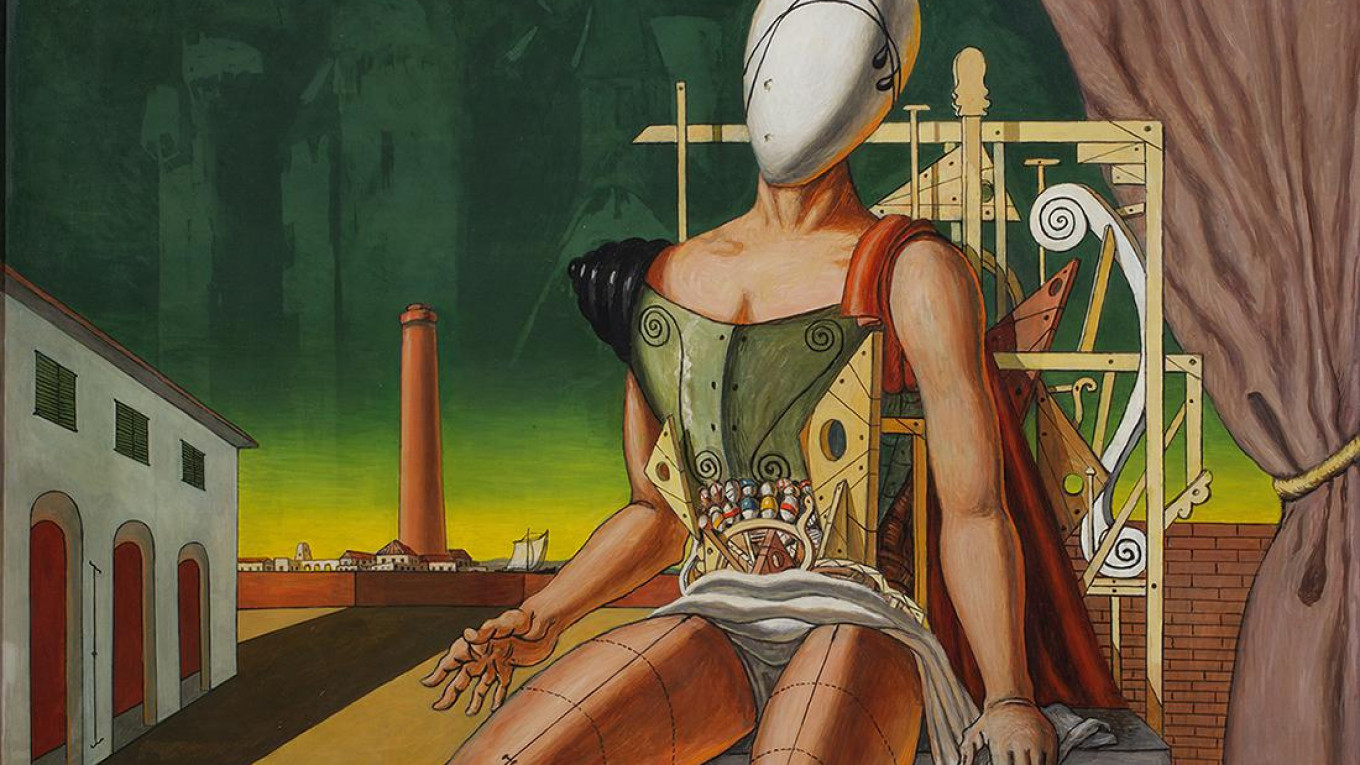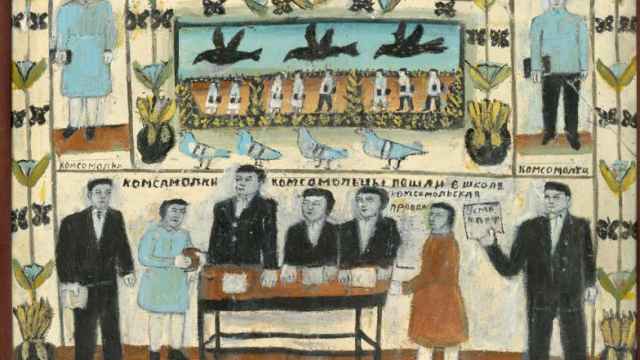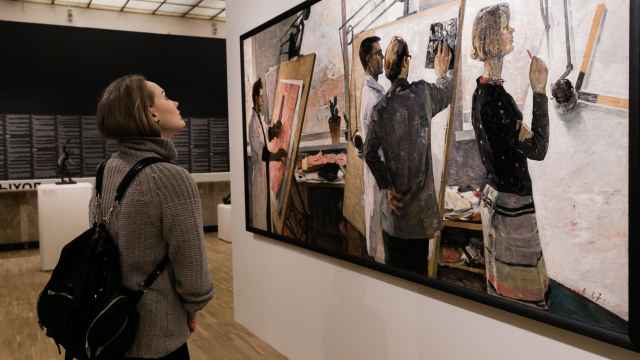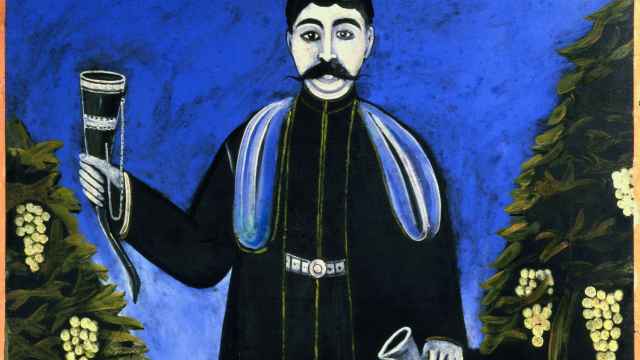This May, exhibitions of two great 20th century Italian artists, De Chirico and Morandi opened at the Tretyakov Gallery and the Pushkin Museum of Fine Arts, respectively. Whether by coincidence or a stroke of good luck, Moscow’s residents and visitors got a unique opportunity to study the works of two artists that inspired major 20th century styles such as Surrealism and Minimalism.
In 1929, four artworks from the Italian artist Giorgio De Chirico were on display in the Russian capital for the first time. Today, the State Tretyakov Gallery celebrates the founder of “metaphysical art” with the first large-scale exhibition in Russia entitled “Giorgio De Chirico: Metaphysical Insights.” More than one hundred artworks, paintings, drawings, etchings and sculptures have been put together at the Tretyakov Gallery’s contemporary branch. “
The original idea of the exhibition, proposed by the Giorgio and Isa De Chirico Foundation and Italian curator Gianni Mercurio, was to present De Chirico with a focus on the last years of his career, between 1940 and 1970,” Russian curator Tatiana Goryacheva explains in an interview with The Moscow Times.
But the Tretyakov Gallery wanted to show every aspect of the eclectic artist’s oeuvre, including his first works made in the 1910s, as well as those dating from the 1920s and 1930s. Thanks to its partnership with several international art institutions, the Tretyakov Gallery managed to bring a wide range of De Chirico’s works to Russia, which influenced not just the surrealists, but several Russian artists as well, including Kazimir Malevich and Aleksandr Deyneka.
The sections of the exhibit, aptly called “The Road to Metaphysics,” “History and Myth,” or “Neo-Metaphysics” are not organized chronologically, but instead focus on some important characteristics of the artist.
One of the recurring topics in De Chirico is what he calls “the enigma.” He described it as a consequence of the observation and transformation of reality’s elements. The result is something that goes beyond reality itself, where the metaphysical essence is reflected in art.
Among the works on display, the famous
“Melancholy of an Afternoon” from
the Centre Pompidou of Paris, “Hector and
Andromache” from the National Gallery of
Modern Art in Rome, the artworks from the
Museum of Modern and Contemporary art of
Trento and Rovereto, as well as the theatrical
costumes designed by De Chirico for Sergei
Diaghilev’s ballet “The Ball.”
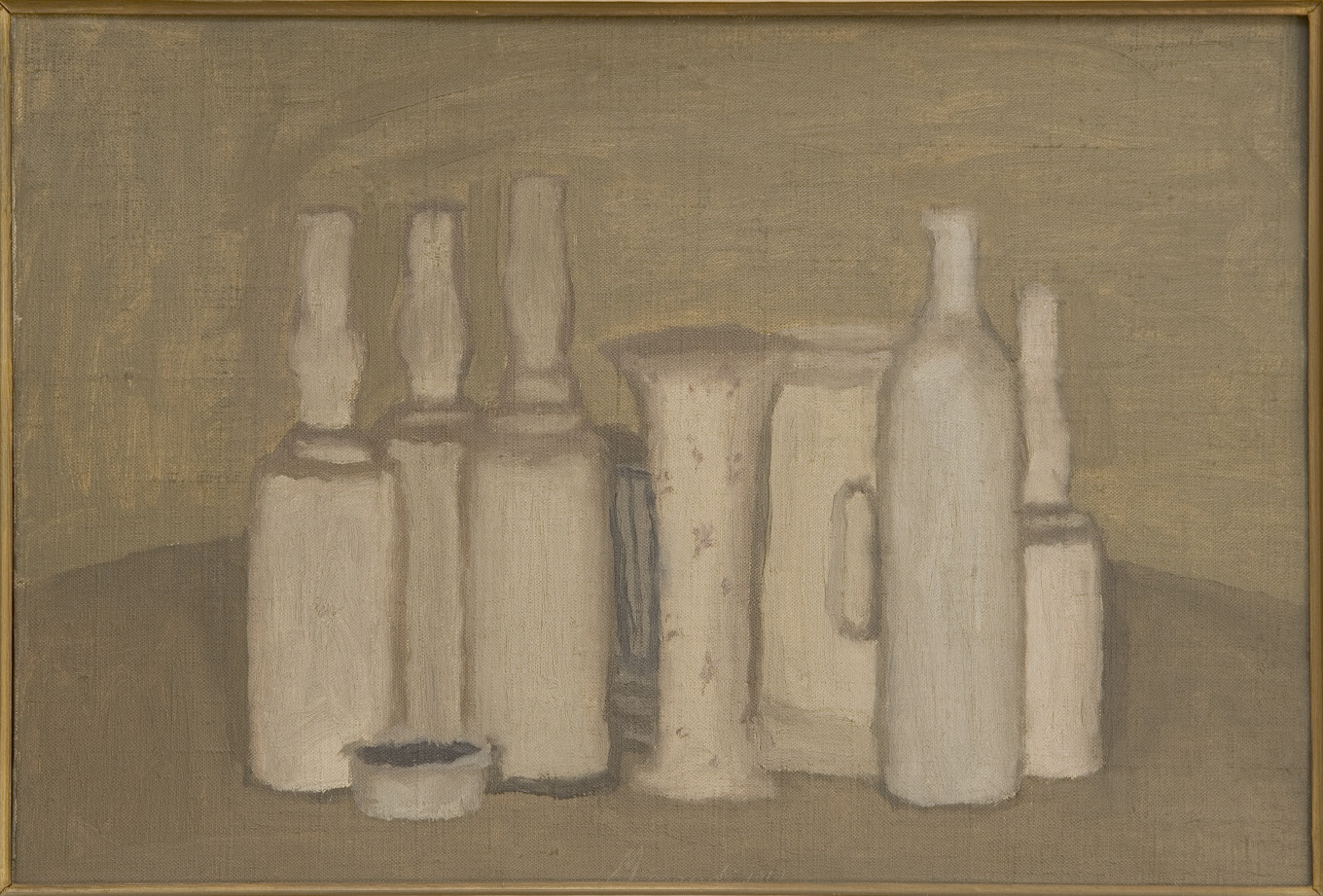
Giorgio Morandi’s works were previously exhibited at the Pushkin Museum more than forty years ago. Marina Loshak, the museum’s director, said in an interview with The Moscow Times that Morandi is “an artist that fits our museum perfectly.”
Whereas 1973 exhibition was held in the main building, the Western Art wing has works “by all the artists he valued: Miro, Renoir, Manet, Seurat an especially Cezanne, who influenced him greatly.”
The Pushkin Museum shows some quintessential works, the best from each period of his life. It’s an exhibition for “those who are willing to walk slowly and look closely,” says Loshak. When paying attention, one can note how Morandi’s approach to art changed over the years: from metaphysical paintings to his famous modernist still lifes, landscapes and portraits.
There are whole rooms with paintings and drawings of flowers and vases. “They had a special meaning for Morandi, it’s not for nothing that he turned objects into something else, shapes or symbols of space by covering them with plaster or painting them over,” says Loshak.
The space of the museum was transformed for the exhibition under the guidance of architect Kirill Asse, who decided to change the texture of the walls to resemble that of Morandi’s paintings and smooth out the edges of the corners.
“That, plus the open windows, creates a light-filled environment which doesn’t quite feel like a museum,” says Loshak.
Several items from Morandi’s workshop are on view at the exhibit, as well as copper plates and corresponding etchings. This way the visitors can visualize some aspects of Morandi’s process of creating his artworks. “This is especially important for artists who are our primary target audience for this exhibition,” says Loshak.
A Message from The Moscow Times:
Dear readers,
We are facing unprecedented challenges. Russia's Prosecutor General's Office has designated The Moscow Times as an "undesirable" organization, criminalizing our work and putting our staff at risk of prosecution. This follows our earlier unjust labeling as a "foreign agent."
These actions are direct attempts to silence independent journalism in Russia. The authorities claim our work "discredits the decisions of the Russian leadership." We see things differently: we strive to provide accurate, unbiased reporting on Russia.
We, the journalists of The Moscow Times, refuse to be silenced. But to continue our work, we need your help.
Your support, no matter how small, makes a world of difference. If you can, please support us monthly starting from just $2. It's quick to set up, and every contribution makes a significant impact.
By supporting The Moscow Times, you're defending open, independent journalism in the face of repression. Thank you for standing with us.
Remind me later.


